If you’ve been searching for soft, fluffy, gluten-free bread that bakes perfectly in the oven, this recipe is for you! It’s light, slices beautifully for sandwiches, and doesn’t crumble like many store-bought loaves. Best of all, it’s dairy-free with an easy egg-free option. Whether you’re new to gluten-free baking or simply prefer the oven method, this gluten-free bread recipe delivers consistent, delicious results every time.
This post may contain affiliate links. Please read our Disclosure Policy.
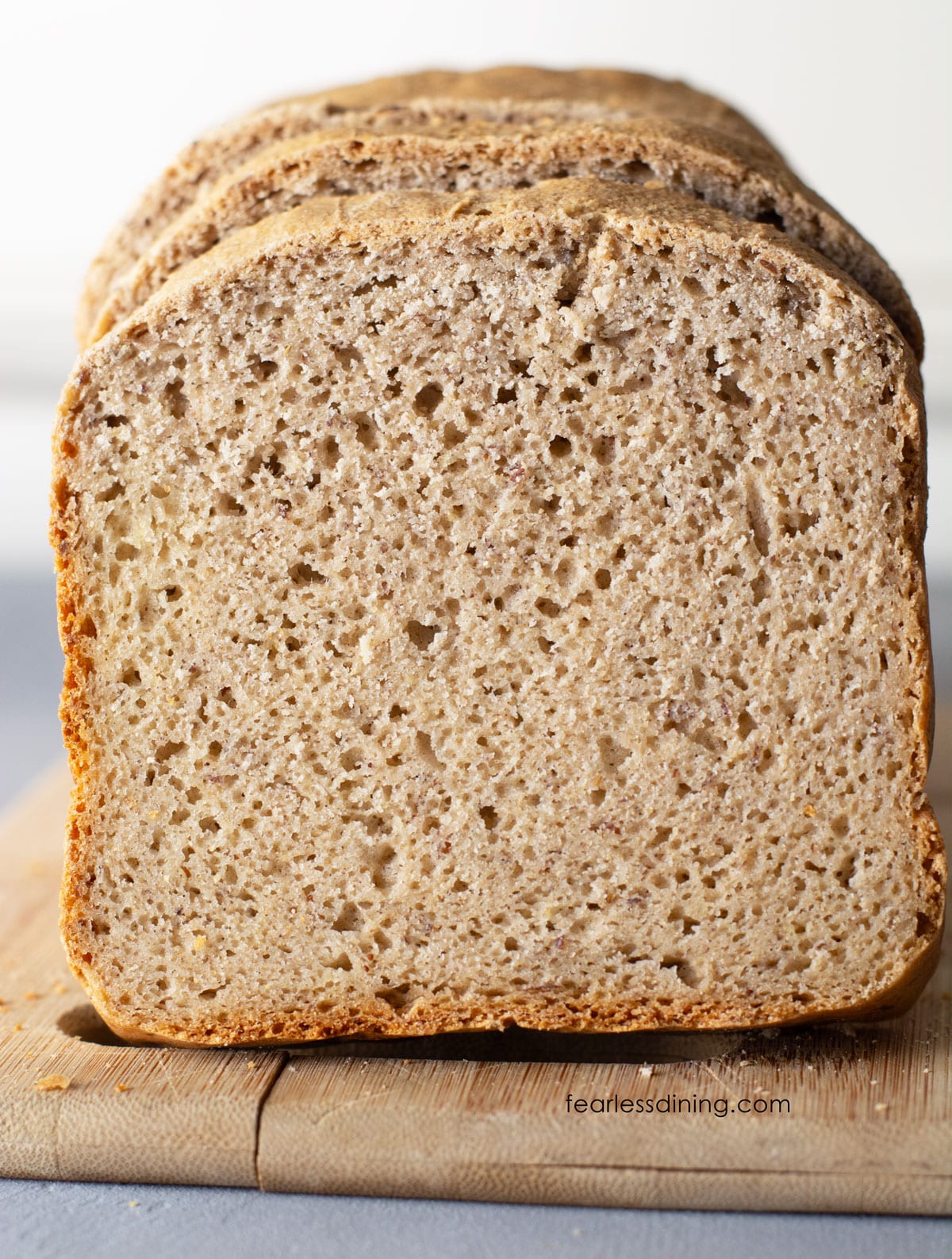
❤️ Why we love this gluten-free bread recipe:
[👉 Jump to Recipe]
I first knew this gluten-free bread recipe was a winner when my husband packed a peanut butter and jelly sandwich made with it, tucked it into his bike jersey pocket, and rode for miles. The bread held up perfectly, no crumbling or falling apart!
After sharing my popular Gluten-Free Bread Machine Recipe, readers kept asking if it could be baked in the oven. So, I tested it, and it worked beautifully! Even better, this soft, delicious homemade bread stays fresh without needing to be toasted!!
This oven-baked version is nearly identical to my original Gluten-Free Bread Machine recipe, but I swapped xanthan gum for psyllium husk powder to make it gum-free. This change gives the bread a slightly darker color. If you prefer a whiter loaf, you can stick with xanthan gum instead.
If you love to bake bread, I have so many incredible gluten-free bread recipes for you to try. Let me know which is your favorite! This recipe is part of my Ultimate Guide to Gluten-Free Bread Recipes, where I share trusted tips, flour blends, and more reader-loved breads.
Allergen Information:
I know many of my readers have multiple food sensitivities. Here’s what you won’t find in this simple gluten-free bread recipe:
✅ Gluten-Free
✅ Dairy-Free
✅ Nut-Free
✅ Soy-Free
✅ Oat-Free

You may also love my Gluten-Free Oat Bread or this Gluten-Free Whole Grain Bread Recipe. If you prefer a sweeter bread, try this Gluten-Free Hawaiian Bread.
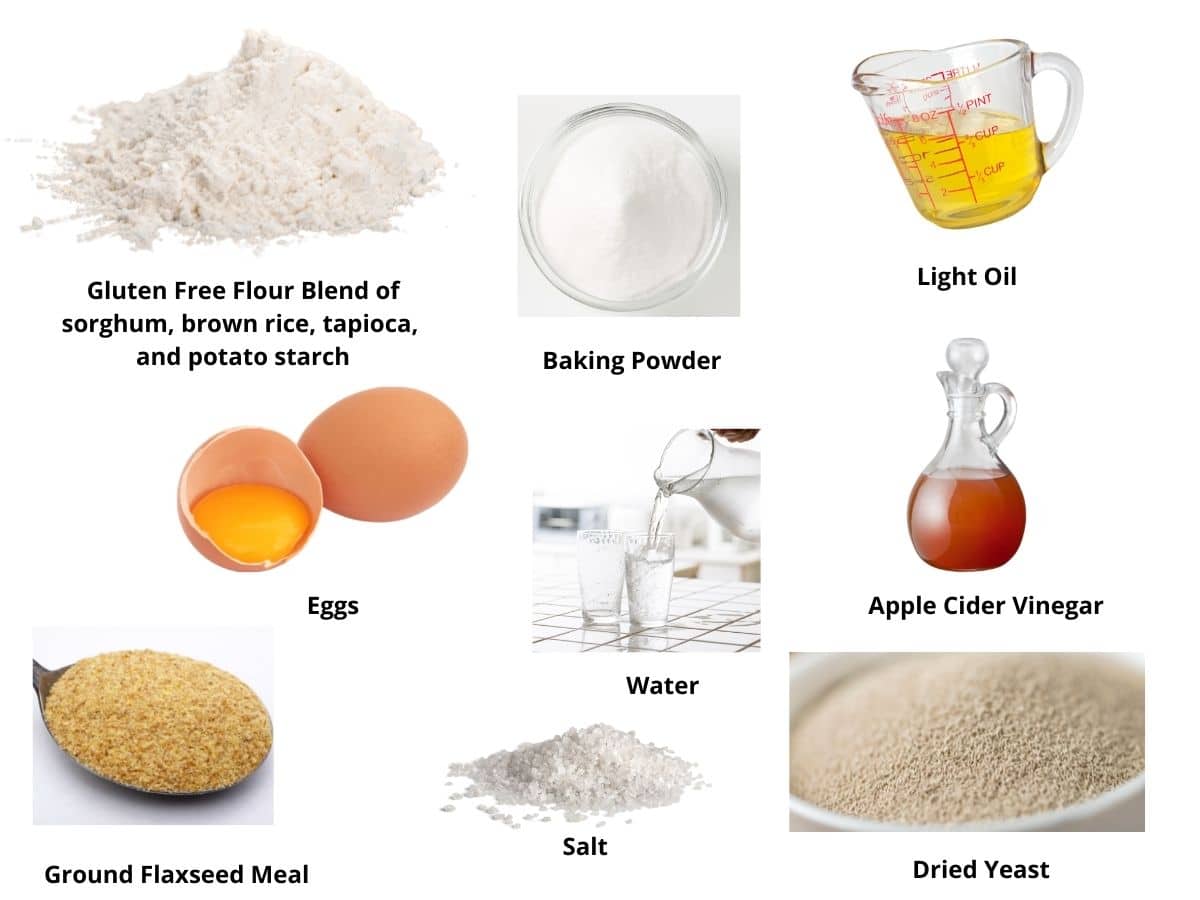
Ingredient Notes:
For the full list of ingredients and amounts, please go to the recipe card below.
- Gluten-Free Flour Blend: I developed this recipe using a custom mix of gluten-free flour and starch. Many 1:1 blends don’t work well with yeast, so I created a foolproof option that delivers consistent results. See the Substitutions section below for my tested gluten-free flour blend recommendations.
- Flaxseed Meal: Use finely ground flaxseed meal, not whole seeds. If needed, you can omit this ingredient. (Wondering if flaxseed is gluten-free? Read Is Flaxseed Gluten-Free? You can also omit this ingredient if you are unable to eat flaxseed.
- Eggs: Use large eggs for just the perfect structure and moisture balance.
- Apple Cider Vinegar: This adds a slight flavor boost and helps the bread rise better.
- Baking Powder: I add a little for extra lift. Be sure to use aluminum-free baking powder.
- Sugar: Just a couple of tablespoons to activate the yeast and balance the flavor.
- Salt: Sea salt or kosher salt both work well.
- Yeast: I used rapid yeast to make this bread. Active dry yeast will also work. Always check the label to confirm it’s gluten-free. (⚠️ Red Star Platinum Yeast is NOT gluten-free!)
- Water: Always use purified water when baking with yeast. Tap water often contains chlorine and other chemicals that can weaken or even kill your yeast, preventing your bread from rising properly. Choose filtered or bottled water free from these additives to get the best rise and texture.
Ingredient Substitutions:
Gluten-Free Flour Blend:
You can use a gluten-free flour blend if you prefer not to mix your own flour and starch. I highly recommend my custom gluten-free bread flour blend or Cup4Cup. However, Cup4Cup recently changed its formulation, and I haven’t had a chance to retest this recipe with the new blend. If you try it, please let me know how it works!
Reader-Tested Flour Blends:
Several readers have tested this recipe with different gluten-free flour blends:
- Walmart Great Value Gluten-Free Flour Blend and Namaste: Readers have told me they used these two blends successfully in this recipe/
- ⚠️ Bob’s Red Mill 1:1 and King Arthur Measure for Measure: A few readers tried these, but these two brands of gluten-free flour blends don’t perform well in yeast recipes, so I don’t recommend them for this bread. (You often must visit the manufacturer’s website to find this information.)
Dietary Substitutions:
- Egg-Free: One reader reported that she had great success making this bread egg-free using Just Egg liquid egg replacer.
- Yeast: Swap the rapid-rise yeast for active dry yeast, but always check the expiration date to make sure it isn’t expired!
Tips For Making the Fluffiest Gluten-Free Bread:
- Use a Pullman loaf pan. It is perfect for rising and baking bread in the oven. It promotes even rising and helps the bread hold its shape. I find my bread rises higher using this pan.
- Resist the urge to peek! (I know this can be hard, especially when the house has a yummy baked bread aroma!) Opening the oven door while the bread is baking can cause temperature fluctuations, leading the bread to sink in the middle.
How to Make Gluten-Free Bread (Step-By-Step)

Step 1: Add the eggs, oil, apple cider vinegar, and warm water (around 110º F) to a stand mixer bowl. Put on the paddle attachment. Start mixing on low speed, then increase to medium speed until the mixture is fully blended.
Step 2: Combine the gluten free flour, baking powder, salt, ground flaxseed meal, and rapid yeast in a large mixing bowl. I recommend mixing the dry ingredients separately before adding them to the mixer. This ensures they are all blended together evenly.
Gradually add the dry ingredients to the wet ingredients in the mixer bowl. Mix on low speed until all of the flour is mixed in. Mix for two minutes on medium speed.
Email This Recipe To Me!
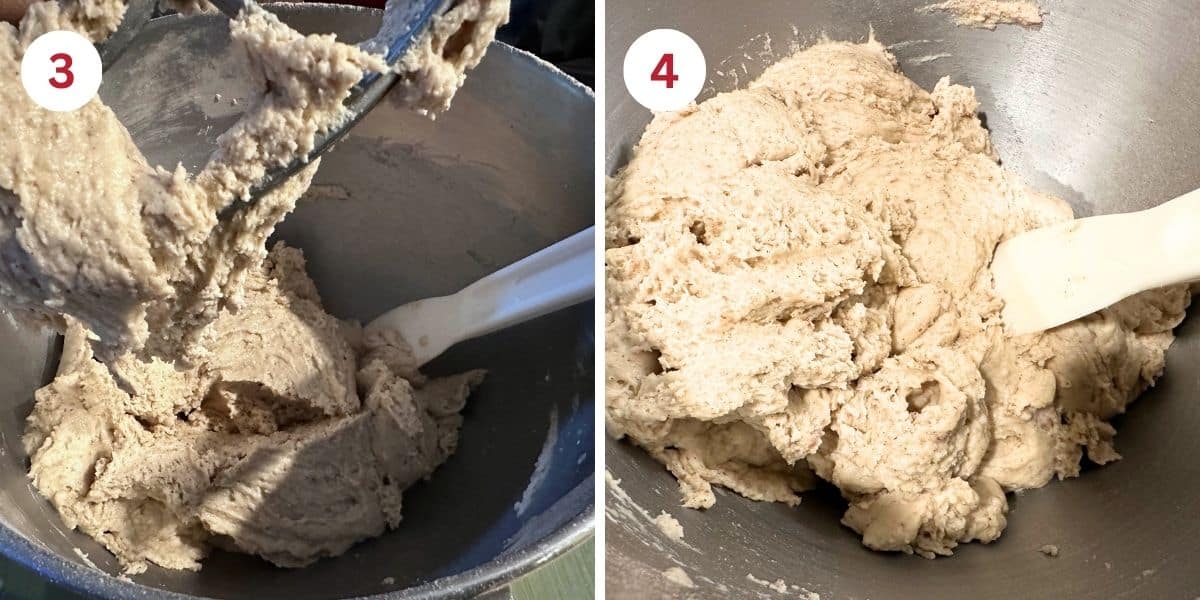
Step 3: Once the dough comes together, check the consistency and compare to my photo. Look at your dough and poke a finger into it. Is it wet, sticky, or just right? You may need to add more flour depending on which flour blend you use.
NOTE: Every gluten-free flour blend has a different starch-to-grain ratio. The brand of gluten-free flour you use will affect the moisture of the batter. If your cake batter is too runny, add more flour, and if it is too thick, add more liquids. Read Why Gluten-Free Flour Blends Vary to learn more about this.
Step 4: Remove the dough from the mixer bowl and prepare to rise. Use a spatula to scrape the dough from the bowl and paddle. It’s time to let it rise!
👉 Sandi’s Oven Tip: I like to rise my dough in the oven. Preheat the oven to 175ºF, then turn it off. Crack the oven door open and place the dough inside to rise in the warmth.

Step 5: Line a 9.5×5 inch or Pullman loaf pan with parchment paper. Transfer the dough to the pan and loosely cover it with plastic wrap. Cover the dough loosely with plastic wrap and put it in the warm oven to rise. The dough is finished rising when it has doubled in size.
Step 6: Remove the pan from the rising area, remove the plastic, and preheat your oven to 350º F.
Step 7: Place the pan of risen dough in the oven and bake for 40-45 minutes. The actual bake time will vary by the material the pan is made from, the size of the pan, etc.
The bread is finished baking when it is golden on top and has an internal temperature of 200-205º F. I recommend using this digital thermometer to check the internal temperature.
Step 8: When the bread is finished baking, remove the pan from the oven. Let it sit in the pan for 5 minutes, then carefully lift the bread out of the Pullman loaf pan by the ends of the parchment paper. Put the bread onto a cooling rack.
Important: Resist the urge to slice the bread while it’s warm! Let it cool completely to room temperature before cutting. This helps the crumb set and prevents the bread from becoming gummy.
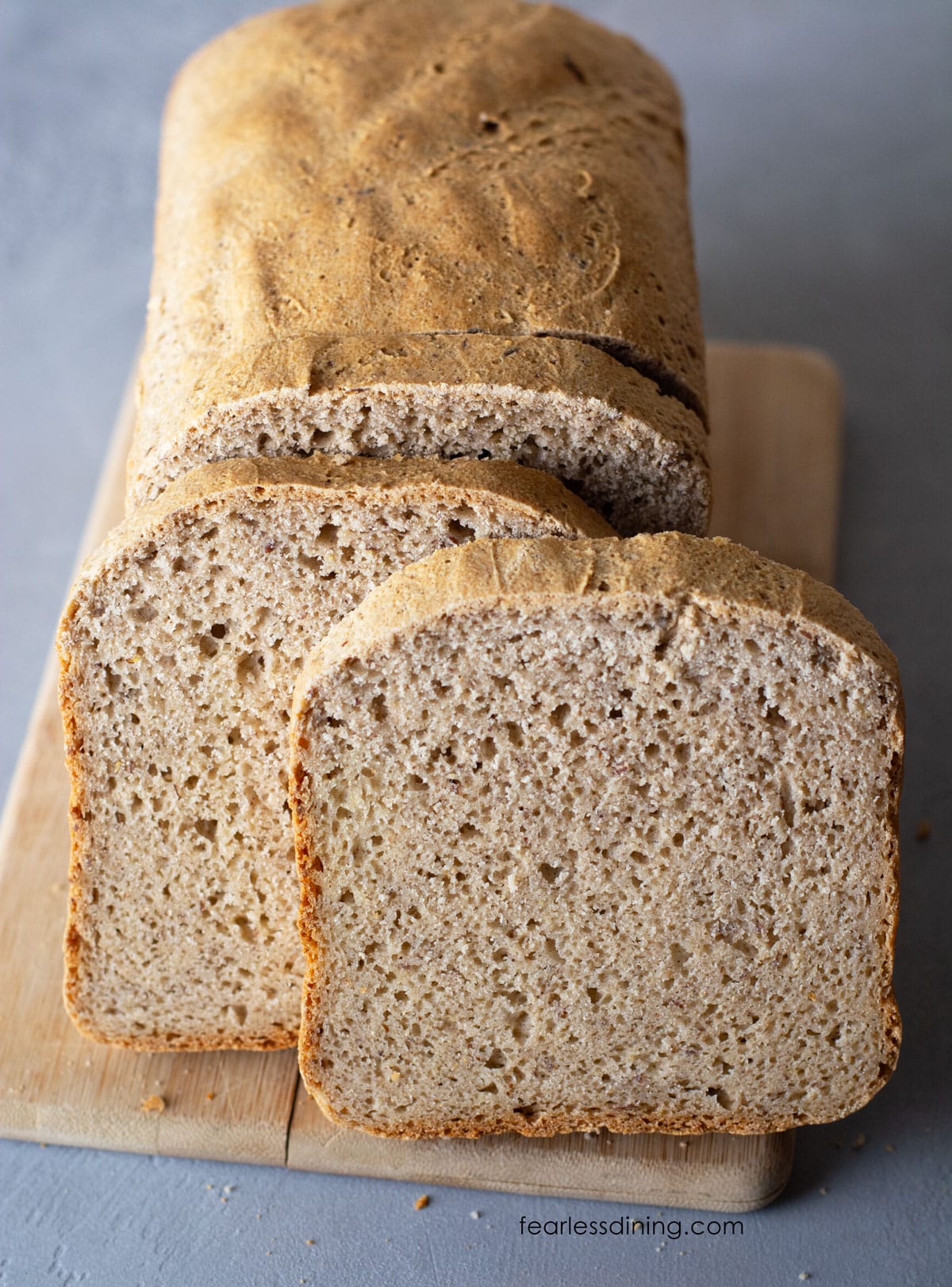
Storage and Freezing Gluten-Free Bread:
This homemade bread should be stored in an airtight container. Gluten-free bread lacks the preservatives that regular wheat bread contains and will spoil faster. My rule of thumb is to slice the bread and freeze 3/4 of the slices, leaving a few slices out to enjoy.
You can pop a frozen slice in the toaster or microwave oven to thaw the bread. To learn more tips on how to store bread, check out my guide on How to Store Gluten Free Bread.
Gluten-Free Bread Troubleshooting:
If you notice your gluten-free bread dough is too sticky, it usually means you have too much liquid in the dough, or you didn’t bake the bread long enough. The best way to fix sticky dough is to add more gluten-free flour or bake it for a longer period. Some gluten free flour blends are very starchy, and you need to use more flour with these blends than with other blends.
There can be many reasons for a bread not rising. Check the yeast expiration date. Make sure you proof the yeast in a warm environment, and use purified water.
If your gluten-free bread is falling apart, chances are that you didn’t use a binder in the flour blend. Gluten in wheat is the “glue” that holds regular baking together. Gluten-free flour doesn’t have the same “glue,” so you have to add it. Ensure the gluten-free flour blend contains either xanthan gum, guar gum, or psyllium husk.
For more bread troubleshooting, read my Gluten-Free Bread Troubleshooting Guide for more information and tips. Also, be sure to store your bread correctly.
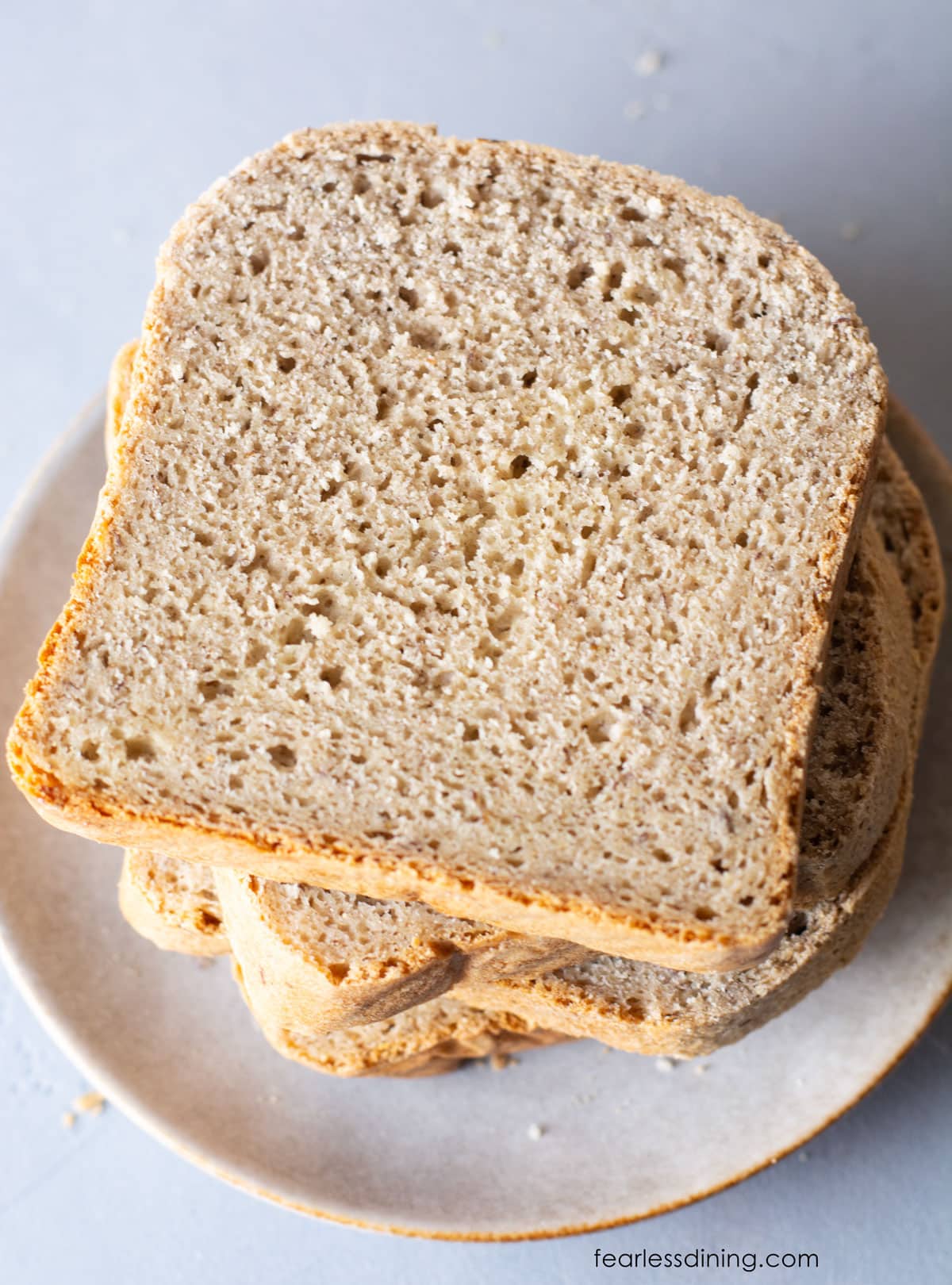
More Gluten-Free Bread Recipes:
If you love bread, I have so many incredible, easy bread recipes for you to try. These are all well-tested recipes I encourage you to try!
- Pull Apart Gluten-Free Monkey Bread
- Gluten-Free Cinnamon Raisin Bread
- Easy Gluten-Free Focaccia recipe
- Gluten-Free Challah
Love This Recipe?
💬 Did you make this gluten-free bread recipe? Drop a comment below, and let me know how it turned out! ⭐⭐⭐⭐⭐ Please include which flour blend you used. This will help others know this recipe is delicious. Thank you!

Easy, Fluffy Gluten Free Bread
Ingredients
Equipment
Method
- Add 2 large eggs, oil, 1 teaspoon apple cider vinegar, 1/4 cup light oil, and 1 1/2 cups purified water (around 110º F) to a stand mixer bowl. Put on the paddle attachment. Start mixing on low speed, then increase to medium until fully blended.
- Combine 1 cup sorghum flour,1/2 cup brown rice flour, 1 cup tapioca starch, 1/2 cup potato starch, 2 1/2 teaspoons rapid yeast, 2 tablespoons cane sugar, 1 1/2 tablespoons psyllium husk powder, 2 tablespoons ground flaxseed meal, 1 teaspoon baking powder, and 1 teaspoon salt in a large mixing bowl. * I recommend mixing the dry ingredients separately before adding them to the mixer. This ensures they are all blended together evenly.
- Add the dry ingredients to the wet ingredients a cup at a time. Mix on low to mix in the flour before adding more. If you add all of the flour at once, some may fly out of the stand mixer bowl. Gradually increase the speed to medium and let the dough mix for 2 minutes.
- Once the dough comes together, check the consistency. Look at your dough and poke a finger into it. Is it wet, sticky, or just right? You may need to add more flour or water depending on which flour blend you use.
- Use a spatula to scrape the dough from the bowl and paddle. It’s time to let it rise! I like to rise my dough in the oven. Preheat the oven to 175ºF, then turn it off. Crack the oven door open and place the dough inside to rise in the warm oven.
- Line a 9.5×5 inch or Pullman loaf pan with parchment paper. Transfer the dough to the pan and loosely cover it with plastic wrap. Cover the dough loosely with plastic wrap and put it in the warm oven to rise. The dough is finished rising when it has doubled in size.
- Remove the pan from the rising area, remove the plastic, and preheat your oven to 350º F. Place the pan of risen dough in the oven and bake for 40-45 minutes. The actual bake time will vary by the material the pan is made from, the size of the pan, etc.
- The bread is finished baking when it is golden on top and has an internal temperature of 200-205º F. I recommend using this digital thermometer to check the internal temperature.
- When the bread is finished baking, remove the pan from the oven. Let it sit in the pan for 5 minutes, then carefully lift the bread out of the Pullman loaf pan by the ends of the parchment paper. Put the bread onto a cooling rack.
- Do not cut the bread before it has fully cooled! Let it cool completely to room temperature before cutting. This helps the crumb set and prevents the bread from becoming gummy.
Nutrition
Notes
- I tested this brand with the above flour/starches. I did test the recipe with Cup4Cup’s old formulation, but I haven’t had a chance to test the new formulation. Some readers wrote to me that Walmart Great Value and Namaste flour blends worked well. (I personally haven’t tried them, but I am sharing this information to be helpful.)
- If you want to use another blend, please verify the blend you use works in yeast recipes. Most brands put this information on their website. Many 1:1 brands do not work with yeast.
- Make it egg-free. One reader wrote that Just Egg egg replacer works great in this recipe.
- You can swap active dry yeast for rapid yeast. Be sure to check the expiration date on the yeast. Note: Red Star Platinum is not gluten free.
- Always use purified water when baking with yeast. Tap water often contains chlorine and other chemicals that can weaken or even kill your yeast, preventing your bread from rising properly. Choose filtered or bottled water free from these additives for the best rise and texture.
- This homemade bread should be stored in an airtight container. Gluten-free bread lacks regular wheat bread’s preservatives and will spoil faster. My rule is to slice the bread and freeze 3/4 of the slices, leaving a few slices out to enjoy.
Nutritional Disclaimer
Nutritional information is an estimate provided to you as a courtesy. You should calculate the actual nutritional information with the products and brands you are using with your preferred nutritional calculator.
Tried this recipe?
Let us know how it was!Gluten-Free Related Reading
Gluten-free baking is like a science experiment. There are so many things you need to understand the different components of baking without gluten. My Gluten-Free Resources Section is here to help teach you the tools you need to know to become a confident gluten free baker.
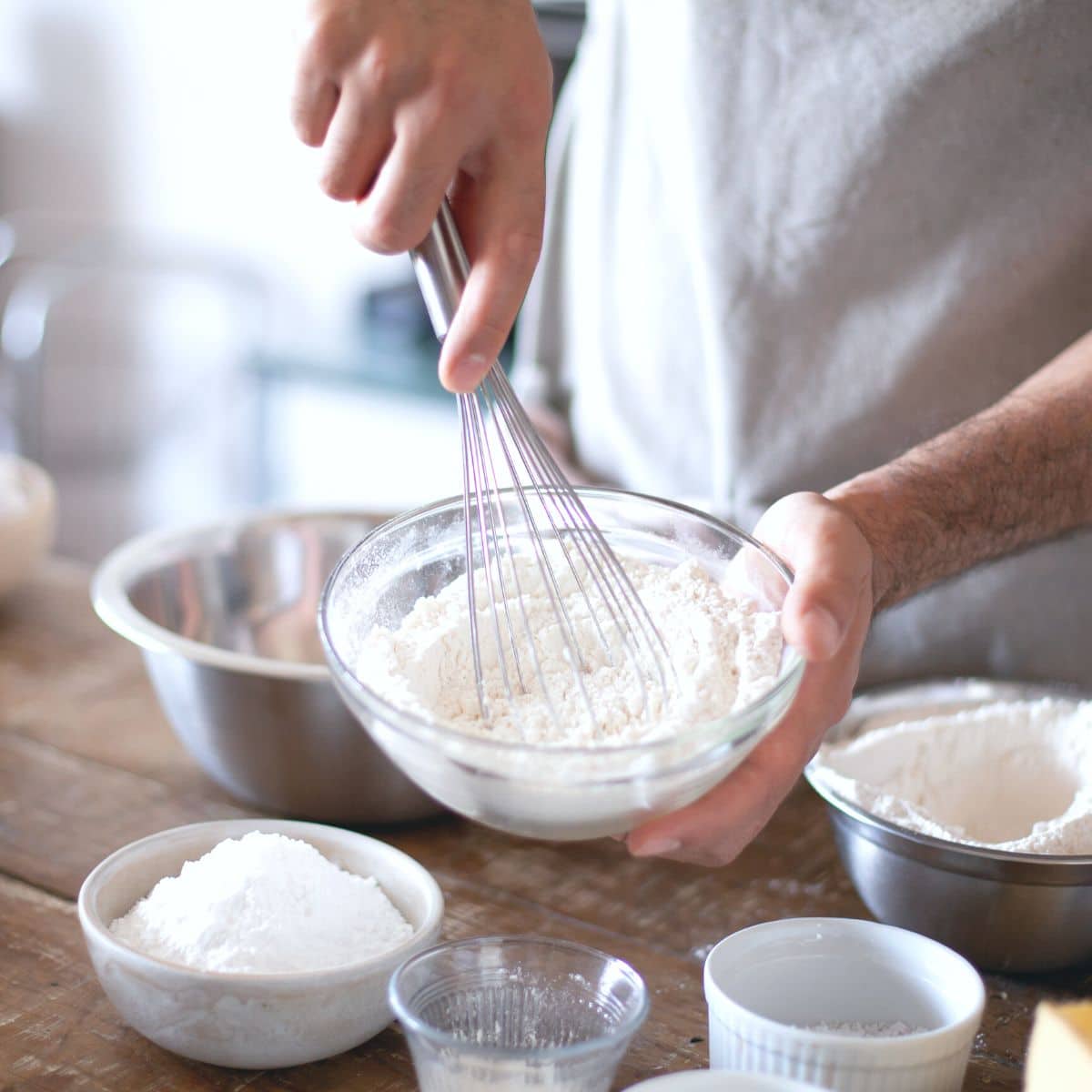
My Best Gluten-Free Baking Tips For Better Baking!
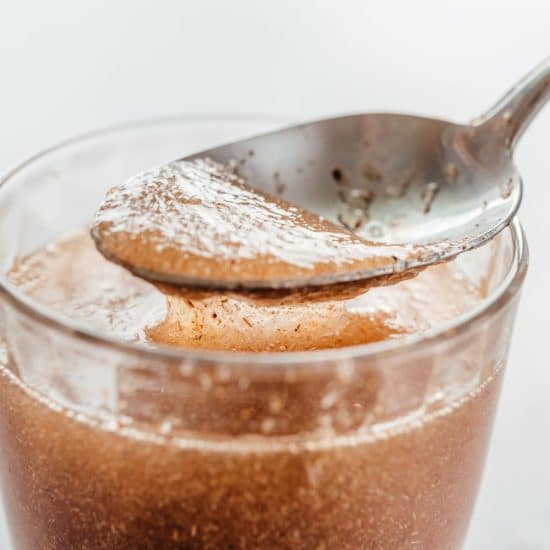
Why Binders Are Important In Gluten-Free Baking
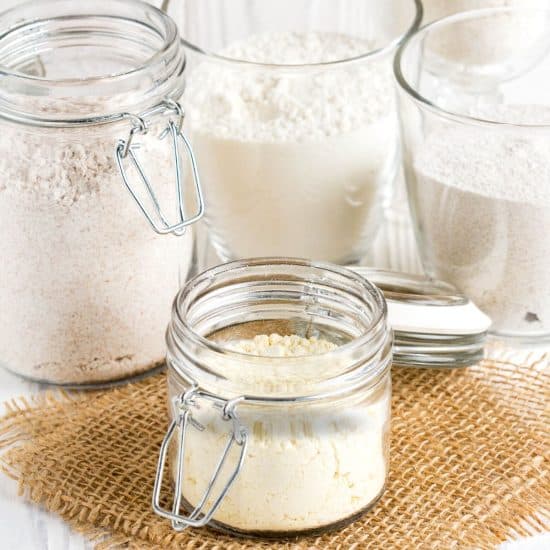
The Best Gluten Free Flour Blends – And how to use them!


Hi Sandi. Thank YOU for your generous sharing. I just read your post and can’t wait to try! I have not eaten bread for 2 years now due to intolerance of wheat bread. Looking forward to receiving more recipes from you : )
I am so glad you will try this recipe. I am excited for you to have bread again. I have quite a few tasty bread recipes. Please reach out if you have any questions making this recipe.